PPARα exacerbates Salmonella Typhimurium infection by modulating the immunometabolism and macrophage polarization
- PMID: 39508622
- PMCID: PMC11545264
- DOI: 10.1080/19490976.2024.2419567
PPARα exacerbates Salmonella Typhimurium infection by modulating the immunometabolism and macrophage polarization
Abstract
Salmonella enterica serovar Typhimurium (STm) is a causative pathogen for robust inflammatory gastrointestinal disease and can lead to systemic infection. Eicosanoids, bioactive lipid mediators, play a crucial role in modulating both the induction and resolution of inflammatory responses during an infection. A subset of eicosanoids activates PPARs, nuclear receptor/transcription factors that regulate fatty acid metabolism, lipid body formation, and macrophage function. In this study, we determined that mice lacking PPARα exhibited reduced inflammatory hallmarks of STm infection, including lower inflammatory gene expression, cecal inflammation, and bacterial dissemination, along with a significant increase in cecal eicosanoid metabolism compared to wildtype C57BL/6 mice. In macrophages, STm favored M2b-polarized macrophages for intracellular infection, leading to reduced arachidonic acid and ceramide production. Inhibition of fatty acid oxidation via Etomoxir in STm-infected macrophages reduced bacterial burdens and promoted cell death. In Etomoxir-treated wildtype mice, STm infection increased ceramide production, decreased inflammatory gene expression in the cecum, and increased the number of STm-containing M1 macrophages in mesenteric lymph nodes. These findings revealed a novel role for the lipid-immune signaling axis in Salmonella infections, providing significant insights into the lipid-mediated regulation of inflammation during bacterial infections in the gut.
Keywords: Salmonella Typhimurium; eicosanoids; fatty acids; lipidomic analysis; macrophages.
Conflict of interest statement
No potential conflict of interest was reported by the author(s).
Figures
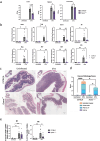
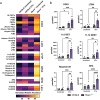
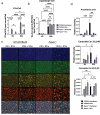
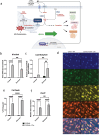
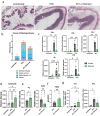
References
-
- CDC . Reports of selected salmonella outbreak investigations. [cited 2023 Oct 1]. https://www.cdc.gov/salmonella/outbreaks.html.
MeSH terms
Substances
Grants and funding
LinkOut - more resources
Full Text Sources
